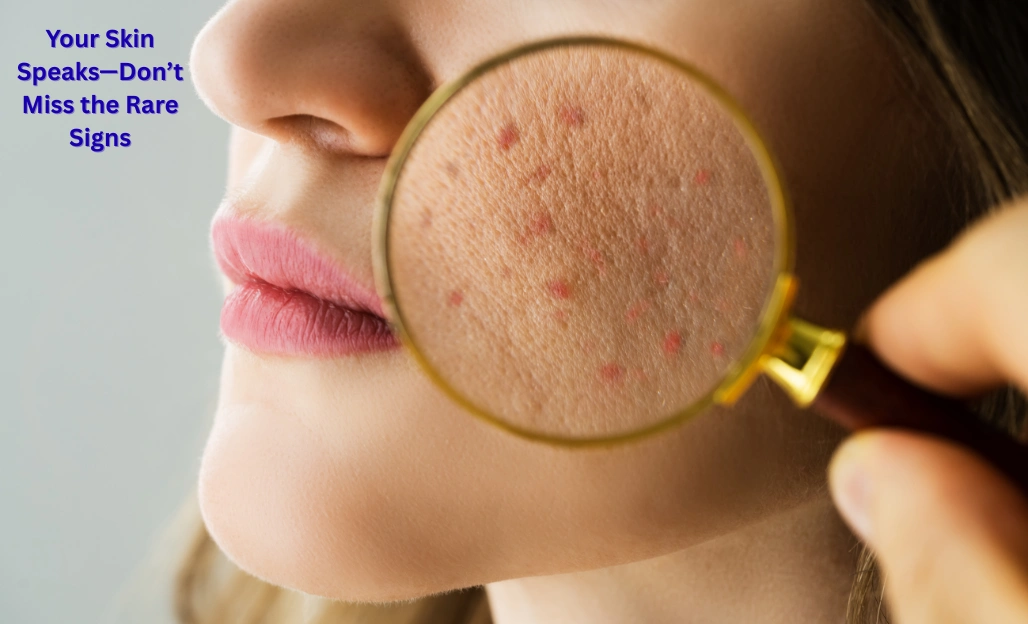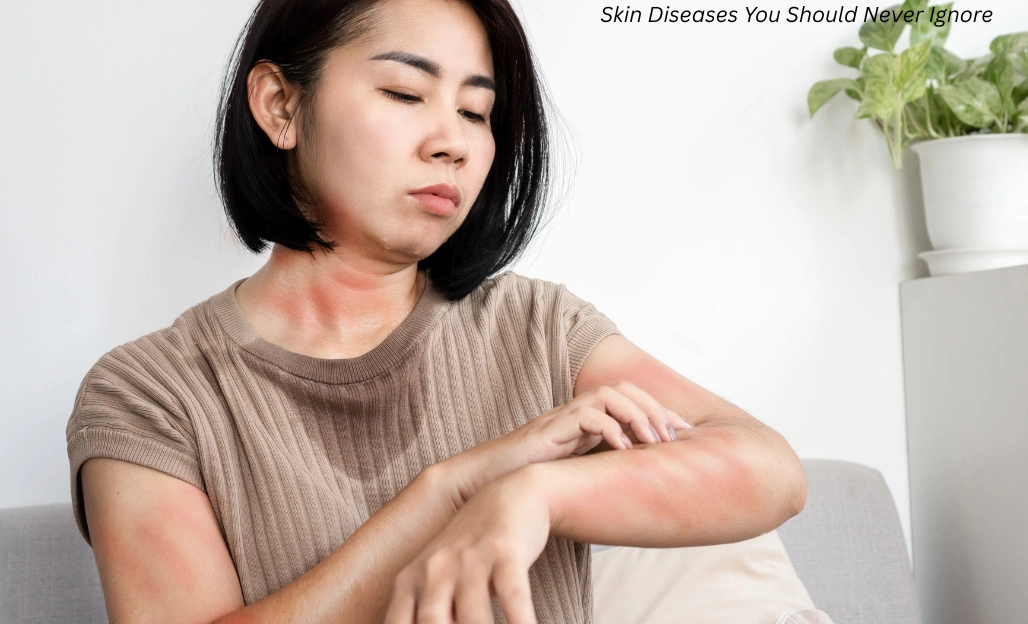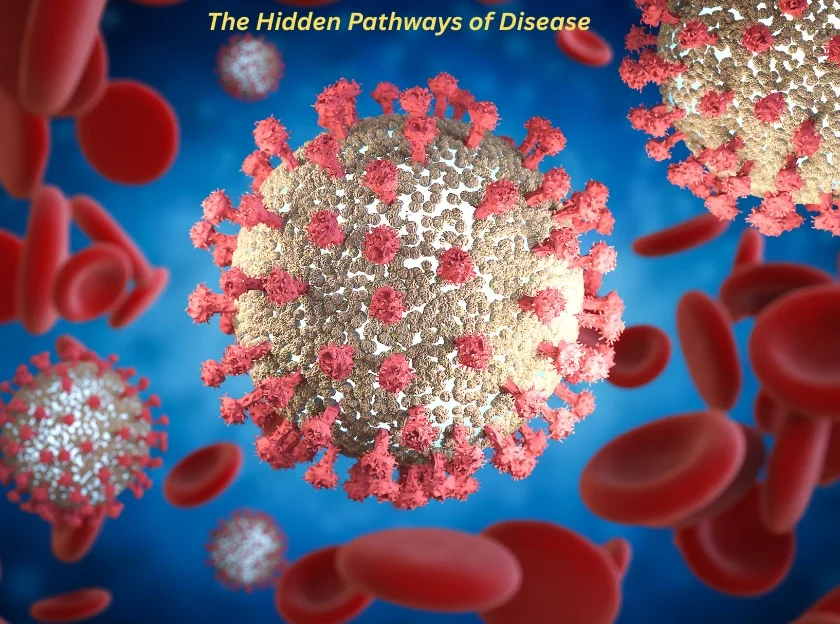In a world flooded with skincare advice and trendy treatments, it’s easy to overlook the subtle signs that something more serious may be happening beneath the surface. While common issues like acne or eczema usually grab all the attention, there exists a lesser-known category of health challenges—rare skin diseases—that often go undetected, misdiagnosed, or even dismissed entirely.
These skin conditions, although uncommon, can be life-altering and demand immediate attention. If left unchecked, they may lead to chronic pain, irreversible damage, or life-threatening complications. So, let’s shine a light on these often-overlooked ailments and understand why rare skin diseases are something you should never ignore.
What Are Rare Skin Diseases?
Rare skin diseases are medical conditions affecting the skin that occur in a very small percentage of the population. In the U.S., a disease is classified as rare if it affects fewer than 200,000 individuals at any given time. However, just because a disease is rare doesn’t mean it’s insignificant.
These conditions can be genetic, autoimmune, infectious, or environmental in origin. Some may manifest from birth, while others develop later in life, often triggered by unknown or complex factors.
What makes them particularly dangerous is the fact that they often go undiagnosed for months—or even years. The symptoms can mimic more common skin conditions, and without specialized evaluation, they may fly under the radar until it’s too late.
Top Rare Skin Diseases You Shouldn’t Ignore
Let’s break down some of the most critical rare skin diseases that deserve more attention, awareness, and empathy.
1. Epidermolysis Bullosa (EB)
Often referred to as “butterfly skin,” this heartbreaking genetic condition causes the skin to become so fragile that even minor friction or injury leads to severe blistering. Infants and children with EB suffer from painful sores, and in severe cases, internal linings like the mouth and esophagus can also blister.
Why you shouldn’t ignore it: EB is more than a skin issue—it can cause infections, malnutrition, and life-threatening complications. Early diagnosis and constant care can significantly improve the patient’s quality of life.
2. Xeroderma Pigmentosum (XP)
XP is a rare inherited condition characterized by extreme sensitivity to UV rays. The skin lacks the ability to repair damage from sunlight, resulting in early-onset skin cancers, freckles, and pigmentation irregularities, often appearing in early childhood.
Why it matters: Without strict sun protection and monitoring, individuals with XP can develop skin cancer as early as age 8. Protective clothing, UV-blocking windows, and early interventions are critical for survival.
3. Hailey-Hailey Disease
Also known as benign familial pemphigus, this chronic condition leads to painful, blistering skin lesions, especially in skin folds like the armpits or groin. Though it’s often misdiagnosed as a fungal infection or eczema, Hailey-Hailey is a genetic disorder.
Why prompt attention is crucial: Misdiagnosis can lead to inappropriate treatments that worsen the condition. A correct diagnosis helps manage flare-ups with topical steroids, antibiotics, and lifestyle adjustments.
4. Pemphigus Vulgaris
This rare autoimmune disorder causes the immune system to attack proteins in the skin, leading to painful blistering and erosions on the skin and mucous membranes.
Why you can’t ignore it: Pemphigus vulgaris can progress rapidly and become life-threatening due to infection and fluid loss. Early immunosuppressive therapy can dramatically alter the outcome.
5. Erythropoietic Protoporphyria (EPP)
EPP is a rare genetic condition that causes severe pain, swelling, and redness when the skin is exposed to sunlight, even briefly. Unlike a sunburn, the pain can begin minutes after sun exposure and may last for days.
Why it matters: EPP isn’t just uncomfortable—it severely limits a person’s ability to live normally outdoors. Diagnosis allows for light-protective strategies and access to emerging treatments like afamelanotide.
Warning Signs You Should Never Ignore
While each rare skin disease has unique symptoms, there are several warning signs that should never be brushed off:
- Blistering without clear cause
- Painful reactions to sunlight
- Persistent rashes or ulcers that resist treatment
- Unusual skin thickening or scaling
- Recurring lesions in the same area
- Sudden pigment changes or sensitivity
- Frequent skin infections without injury
If you notice any of these signs, especially if they don’t improve with conventional care, it’s time to book a dermatology consultation and dig deeper.
Why Early Diagnosis Matters
In the case of rare skin diseases, early diagnosis can literally change lives. Here’s why:
- Prevents irreversible damage: Many rare conditions cause long-term tissue or nerve damage if left untreated.
- Reduces risk of secondary complications: Infections, dehydration, or organ involvement can be prevented with timely care.
- Improves quality of life: Managing symptoms early leads to less pain, fewer hospital visits, and more independence.
- Allows participation in clinical trials: Early patients are often eligible for groundbreaking therapies not available to others.
- Supports mental health: Diagnosis offers validation and access to support systems that can significantly reduce anxiety and depression.
Living with a Rare Skin Disease
Receiving a diagnosis of a rare skin disease can be overwhelming, but you are not alone. Thousands of individuals worldwide face similar challenges and thrive with the right support.
Practical Tips:
- Use fragrance-free and hypoallergenic products
- Maintain a moisturizing routine to protect the skin barrier
- Wear sun-protective clothing and use high-SPF sunscreens
- Track flare-ups in a symptom journal
- Follow prescribed treatments closely and avoid over-the-counter guesswork
Emotional Support:
- Seek local or virtual support groups (e.g., GlobalSkin, RareConnect)
- Talk to a psychologist experienced in chronic illness care
- Involve family and friends in your self-care routine
- Celebrate small wins—every symptom-free day counts!
Emerging Treatments and Hope on the Horizon
While rare skin diseases were once considered medical mysteries, modern medicine is catching up:
- Gene Therapy: Researchers are working on targeted gene replacements for conditions like EB.
- Biologics: Targeted therapies are revolutionizing autoimmune disease treatment, including pemphigus vulgaris.
- Afamelanotide (Scenesse): Now available in select countries for EPP, it boosts melanin production and reduces sunlight pain.
- CRISPR Trials: Genome editing may one day offer permanent cures for hereditary skin disorders.
- AI Diagnostics: Machine learning is improving speed and accuracy in detecting rare dermatological signs.
The future for rare disease patients looks brighter than ever, with new solutions appearing year after year.
Myths About Rare Skin Diseases
Let’s bust some dangerous misconceptions:
- ❌ “It’s just a rash; it’ll go away.” – Many rare diseases start this way but worsen over time.
- ❌ “It’s only cosmetic.” – These conditions can affect internal organs, mental health, and life expectancy.
- ❌ “There’s no treatment.” – While some diseases have no cure, most have effective symptom management options.
- ❌ “You can’t live a normal life.” – With awareness and adaptation, many patients live full, meaningful lives.
When to See a Dermatologist
If your skin symptoms are persistent, unusual, or worsening despite treatment, don’t delay.

Be Prepared:
- Take photos of symptoms during flare-ups
- Keep a record of all treatments tried and their outcomes
- Note any family history of similar conditions
- Ask your dermatologist about genetic testing and biopsy options
Don’t settle for vague answers—get a referral to a specialist if necessary. Your skin could be telling you more than you think.
Conclusion
In the grand scheme of health, your skin is often the first to signal that something is off. While common skin concerns can be annoying, rare skin diseases can be life-threatening if ignored. From blistering disorders like EB to extreme sun sensitivity like XP, awareness is your first line of defense.
If you or a loved one are experiencing unexplainable skin symptoms, don’t brush them off. Trust your instincts. Ask questions. Get evaluated. Your health depends on it.





